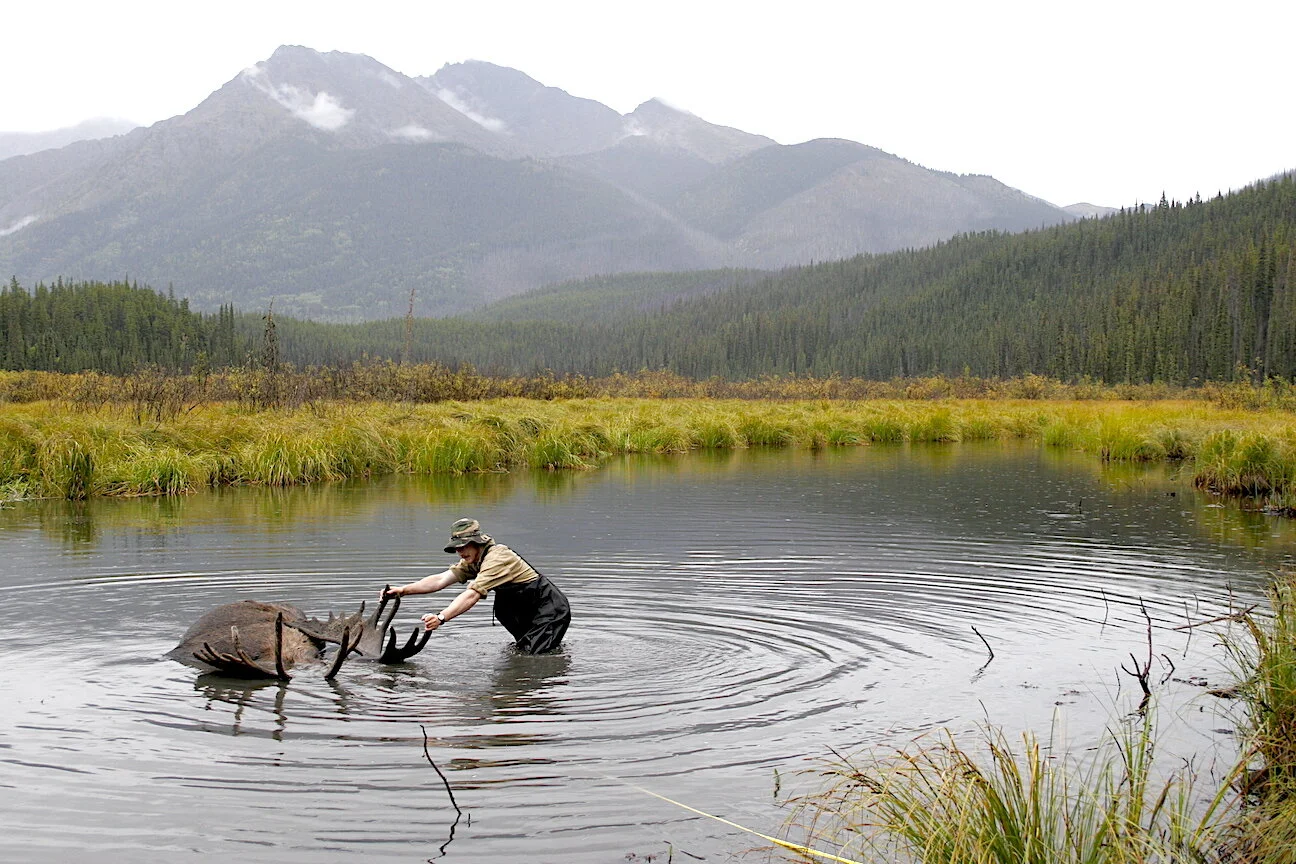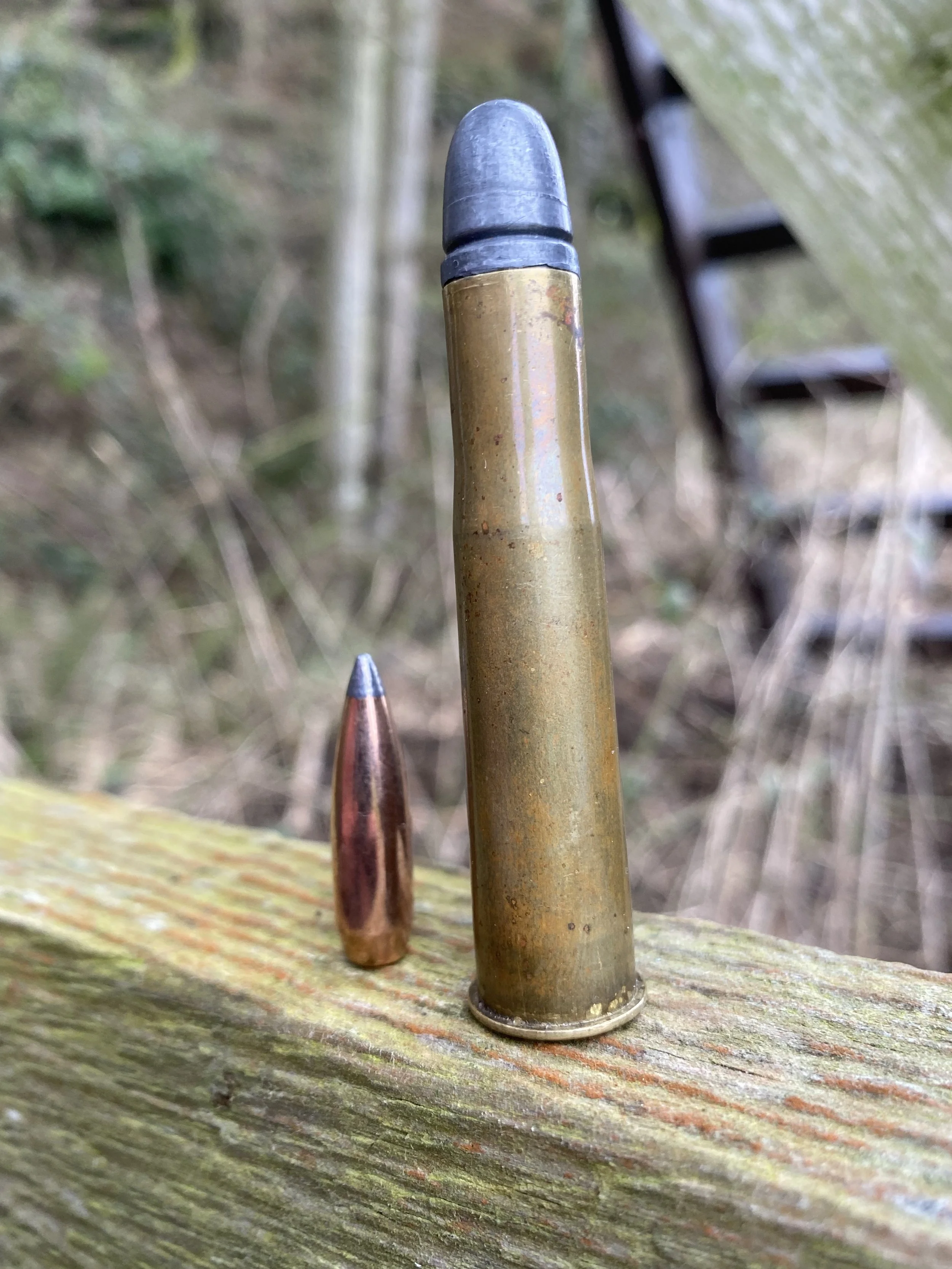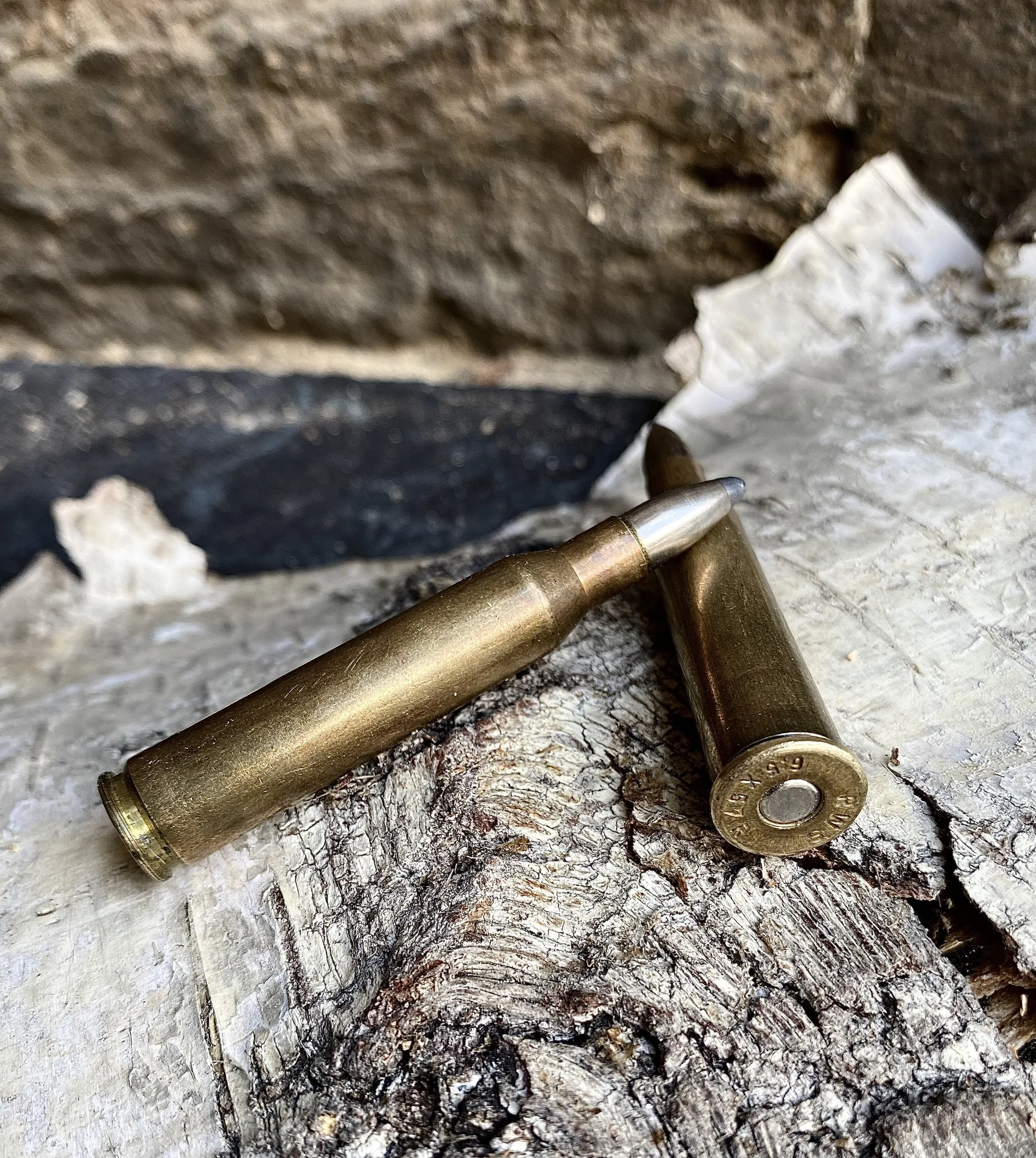300 PRC Versus 300 Winchester Magnum
by Ron Spomer
A quick look at the 300 PRC leads many to declare it does nothing the old 300 Winchester Magnum hasn’t been doing for almost 60 years. But a quick look doesn’t reveal the secrets that help the 300 PRC do what the 300 Winchester Magnum cannot.
Secrets? Well, not exactly, but inconspicuous, even hidden little tweaks and dimensions contribute to special 300 PRC performance the 300 Win. Mag. can’t easily match.
Let’s indulge a closer look to see what makes the 300 Precision Rifle Cartridge special, if not radically different, so you can pour a firm foundation from which to decide if the 300 PRC or 300 Winchester Magnum is best for your hunting and shooting needs.
Birth of the King — 300 Win. Mag.
Since its introduction in 1963, the 300 Winchester Magnum has been King of the 300 magnum hill.
The 300 Winchester Magnum has been the world’s most beloved, versatile and effective 30-caliber magnum almost since the day of its release in 1963. This shortened, blown out, necked down modification of the 300 H&H belted magnum case, which was itself a necked down version of the 375 H&H case, was concocted to provide an alternative to the 300 Weatherby Magnum and the then new 7mm Remington Magnum. Although the Weatherby drove 180-gr. .308” bullets 150- to 200-fps faster, the 300 Winchester rocketed to the top of the pop charts because Winchester smartly made its cartridge “open sourced” instead of proprietary. Anyone was welcomed to builds rifles and ammo for it. Winchester also made the round short enough to fit and feed perfectly in 30-06-length rifle actions. It spit a 180-grain bullet 300 fps faster than the ubiquitous 30-06, and that was enough power increase (and recoil) for most hunters.
Over the years, particularly the last 30 years, a string of new 30-caliber cartridges were trundled out to challenge the King: 300 WSM, 300 SAUM, 308 Norma Magnum, 300 Ruger Compact Magnum, 30 Nosler, 300 RUM, 30-378 Weatherby Magnum… None has come close to stunning, let alone knocking off, the King of the Mountain. But will the 300 PRC?
Federal Premium Gold Medal .300 Win Mag 190 Grain Centerfire Rifle Ammo
300 PRC Objectives
The new 300 PRC case is slightly shorter than the old 300 Winchester Magnum case, but fatter, retaining .532” belt diameter from the head and tapering forward to .515” at the shoulder. This adds about 5 percent more powder volume and enables headspacing off the 30-degree shoulder. The longer neck of the PRC should secure its extra long bullets straighter and more securely that does the old Win. Mag., but those long, high B.C. bullets mandate extra long magazine boxes, too.
First, understand that Hornady did not create the 300 Precision Rifle Cartridge to leave the 300 Winchester Magnum in its slip stream. They did not seek to out run the King, let alone faster 30s like 300 RUM and 30-378 Wby. Mag.
What Hornady aimed at was performance characteristics the U.S. Special Operations Command had identified: increased first-round hits on humanoid targets at extreme ranges. Fifteen hundred yards. Even 2,000 yards.
Well shucks, with the right bullet the 300 Win. Mag. can reach that far. So can all faster 300s. So if the PRC didn’t beat their velocities, how could it outperform them?
By being more accurate. Consistently. Across all rifle platforms. And that meant minimizing wind deflection, among other things…
Genesis of the 300 PRC
To reach this precision shot placement objective, Hornady knew its new 30-caliber of 2018 needed to throw bullets with high Ballistic Coefficient ratings. That meant long, sleek, heavy boat tails with secant ogive nose profiles. Stabilizing such long bullets would require rifling twist faster than the 1:10” standard for the 300 Win. Mag. Hornady made it 1:8.5”, quick enough to stabilize streamlined .308 bullets as long as 1.858”, the length of Hornady’s 250-grain A-Tip Match bullet.
To propel such bullets, Hornady grabbed the 375 Ruger case, shortened it a smidge under 300 Win. Mag. length, and gave it today’s popular 30-degree shoulder. The most obvious benefit of the 375 RCM case was what it didn’t have. A belt. The case rim and head diameter are the same .532” as the 300 Win. Mag., but instead of stepping body size down to .513” to create the headspacing belt, body diameter remains .532” before tapering to .515” at the shoulder. This creates sufficient powder space to more than compensate for the slightly shorter base-to-shoulder length of the case. A 300 PRC case should hold about five percent more powder than a 300 Winchester Magnum case. That results in a seemingly negligible 25- to 50-fps muzzle velocity advantage, but as we’ll see, negligible becomes appreciable at the extended ranges where the 300 PRC is designed to work.
Maximizing 300 PRC Accuracy
With bullet stability assured, Hornady investigated other tweaks to enhance accuracy, and these may be the most significant differences between the 300 PRC and 300 Win. Mag. Eliminating the belt meant the PRC would headspace on its shoulder, arguably an easier way to improve bullet-to-bore alignment. In keeping with this bullet/bore alignment theme, Hornady set the chamber throat (leade) diameter at a minimal .3088”. That’s an extremely tight fit compared to the 300 Win. Mag’s. generous .315” leade diameter. The tight throat leaves virtually no space in which bullets can cant or yaw, deforming slightly when they hit the rifling lands. Given that most bullets are seated to chastely “kiss” the lands or at most perch 0.050” back, canting’s effect on accuracy would seem minimal, but it is enough that precision shooters routinely address it. So-called “match-grade” chambers are reamed to minimize tolerances. Blue-printed actions are fine tuned to maximize bullet/bore alignment. By design 300 PRC chambers are match grade. The benefit might seem much ado about nothing — until you stretch those shots past 1,000 yards. A mere 1/4-inch deflection at 100 yards becomes 2.5 inches at 1,000 yards, 5 inches at 2,000 yards.
Longer neck, longer bullet, longer extreme range precision are hallmarks of the 300 PRC.
Another contributor to bullet/bore alignment is neck length. A long, straight neck holds bullets straight and securely. Alas, the old 300 Win. Mag. neck is just .260” long. Precision shooters like a “one caliber” neck length. Hornady stretched the PRC neck to .306”. Close enough? Apparently. In the four short years since its introduction, the 300 PRC has caught on big with extreme range target shooters and military snipers. And that surely illustrates the value of this round.
B.C. Matters
Despite traditionalists who scoff at B.C. “fixation,” B.C. matters. A great deal. As most semi-serious shooters know by now, the higher a bullet’s B.C., the more efficiently it flies. Less drop, more retained energy at all distances, and — most important of all — less deflection in the wind. This isn’t a big deal at traditional game shooting distances (we’ll stretch that to 500 yards for this investigation) but beyond that the differences really add up, as shown in the following ballistic chart comparing a traditional 200-gr. Nosler Partition, a 200-gr. Hornady ELD-X, and a 230-gr. A-Tip.
Trajectories at 1,000-yards plus might be a foreign concept to many of us, but this is just the start of extreme range military sniping and steel plate target shooting. So notice what a difference a few points of B.C. make. Going from the .481 B.C. bullet to the .597 bullet — the only change — results in 39 inches more drop and 21 inches more wind deflection at 1,000 yards. And the lower B.C. Partition also loses 337 f-p energy. At 2,000 yards these spreads become absolutely ridiculous.
We can improve these trajectories by throwing Hornady’s high B.C. 230-gr. A-Tip bullet with B.C. .823 (these are G1 B.C. numbers and not quite as accurate as G7s, but close enough for comparisons.) Notice how the PRC delivers this bullet with less drop and drift but significantly more energy at 1,000 yards. At 2,000 yards 353 inches (29 feet!) less drop and 100 inches (8.3 feet) less wind deflection (10 mph, right angle, full value) adds up to a huge advantage.
The final entry, a 300 Win. Mag. shooting this same 230-grain bullet (probably at the ragged edge of stability from a 1:10 twist barrel) demonstrates the significant advantages the PRC enjoys. Trying to correct for an additional 92 inches drop and 10 inches wind deflection at 1,500 yards does not make hitting targets any easier.
Stalwart fans of the 300 Winchester Magnum might now ask why we’re launching it 150 fps slower than the PRC with that same 230-grain bullet. Didn’t I earlier note that the five percent powder advantage gave the PRC just 25 to 50 fps more speed? Well, yes, but that’s with more traditional bullets no heavier than about 210 grains. Start seating heavier, thus longer, bullets and they plunge so deeply into the Win. Mag. case that powder charges must be reduced. And this brings us to length considerations.
Hornady ELD Match .300 PRC 225 Grain Centerfire Rifle Ammo
COAL of 300 Winchester Magnum and PRC
While the cases of both these 300s are similar in length, the Cartridge Overall Length of the PRC is significantly more than the 300 Win. Mag. Nearly a half-inch longer. This means long bullets can be seated with their bottoms level with the shoulder/neck junction. Or only slightly lower. This provides good bullet to neck contact and tension for consistent bullet/bore alignment while preserving maximum space for powder. To get this value, however, PRC rifles must be fitted with extra-long magazine boxes and actions long enough to cycle cartridges that are 0.1” longer than the true magnum length of the 375 H&H.
While this means longer bolt throws and slightly heavier rifles than one gets with a true short action, it doesn’t have to mean longer and heavier than 30-06 length actions. The old Remington M700 in standard length came with a magazine box 3.625”. Modern bolt actions specifically designed for the 300 PRC include proper sized magazines. Weight savings come from the PRC using the same bolt face diameter as the Win. Mag.,. This is a PRC advantage over some of the more powerful 300s based on fatter cases. The .582” diameter body of the 30-378 Weatherby, for instance, suggests an oversized receiver to accommodate.
The 300 PRC may not require a fullmagnum action like this 416 Rigby Mauser, but will need extra-long magazine boxes to accommodate its COAL of 3.7”.
Trying to “improve” the 300 Win. Mag. to match the PRC with bullets heavier than about 212-grains becomes more trouble than it’s worth. Even after you’ve lengthened the leade and magazine to fit those long bullets, you’re saddled with that short neck and, unless you cut a match-grade chamber, that “sloppy” leade. If you handload you face the issue of case wallsweakening ahead of the belt unless you use a special Belted Magnum Collet resizing die and minimally resize to headspace off the shoulder. Then there’s the “donut ring” that can build up internally at the neck/shoulder junction. Unless you ream this away, neck tension increases significantly on long bullets seated deep.
Hunting for a Final Decision
If you 300 Win. Mag. fans are feeling “rode hard and put up wet,” take off your slickers and dry out because as hunters you still have the upper hand.
Yes, in my estimation the 300 Winchester Magnum retains its crown atop the hill of 30-caliber hunting cartridges because the 300 PRC’s fine attributes aren’t really necessary for hunting success. Fifty-nine seasons of addressing everything from coyotes to brown bears with 300 Win. Mags. have proven it’s all I need. Even back in the era of Twiggy, the Beatles and Trailers For Sale or Rent, the stodgy old Winchester was singing a fine tune, punching hard, and laying them down. Throw in today’s controlled expansion, higher B.C. bullets from 125- to 210-grains and you’re adding significant trajectory and terminal performance improvements. Check out this ballistic chart covering a 190-grain Nosler AccuBond Long Range and a 150-grain Sierra Spitzer Boat Tail. Zero range was 200 yards:
The old 300 Win. Mag. is now more versatile than ever with dozens of factory ammo choices to cover all shooting and hunting needs. While never as inexpensive as, say, 308 Winchester loads, 300 Win. Mag. ammo remains competitively priced due to all the competition. On the other hand, the new PRC is currently loaded only by Hornady and Federal with bullets from 190-grains to 225-grains. Load your own and anything’s possible, but factory ammo is likely to remain limited and pricey. Beltless 300 PRC cases should prove easier to work with and longer lived than the Win. Mags. unless you use a collet die on the latter.
Conclusion
This 40” bull Kalahari oryx was no match for a 300 Win. Mag. A 300 PRC wouldn’t have killed it any deader, but might have made the shot easier had the wind been blowing or we hadn’t been able to stalk to 325 yards. Empire Rifles Mauser, Leupold VX3 scope. I’d advise anyone who already owns a 300 Win. Mag. to stick with it, but if you’re considering your first 300 magnum and want to enjoy some extreme range target shooting, try the 300 PRC.
This, then, sums up the 300 PRC’s raison d’etre: Consistent precision and minimal wind deflection at extreme range. With standard factory rifles and ammo. The 300 PRC is perfect for the military and for target shooters. It’s arguably more than needed for hunting, but is there such a thing as too good? No, the 300 PRC isn’t significantly faster than the 300 Win. Mag., but it should prove more consistently accurate beyond 500 yards. It has been optimized for long range work.
My conclusion is that the 300 PRC, while seemingly redundant, should be appreciated as a fine tuning of the 30-caliber magnum cartridge. If your interest in 300 magnums points to targets and extreme range plinking, run with the 300 PRC. If you just want a versatile, proven 300 magnum for big game hunting, the old 300 Winchester Magnum is still your best bet.


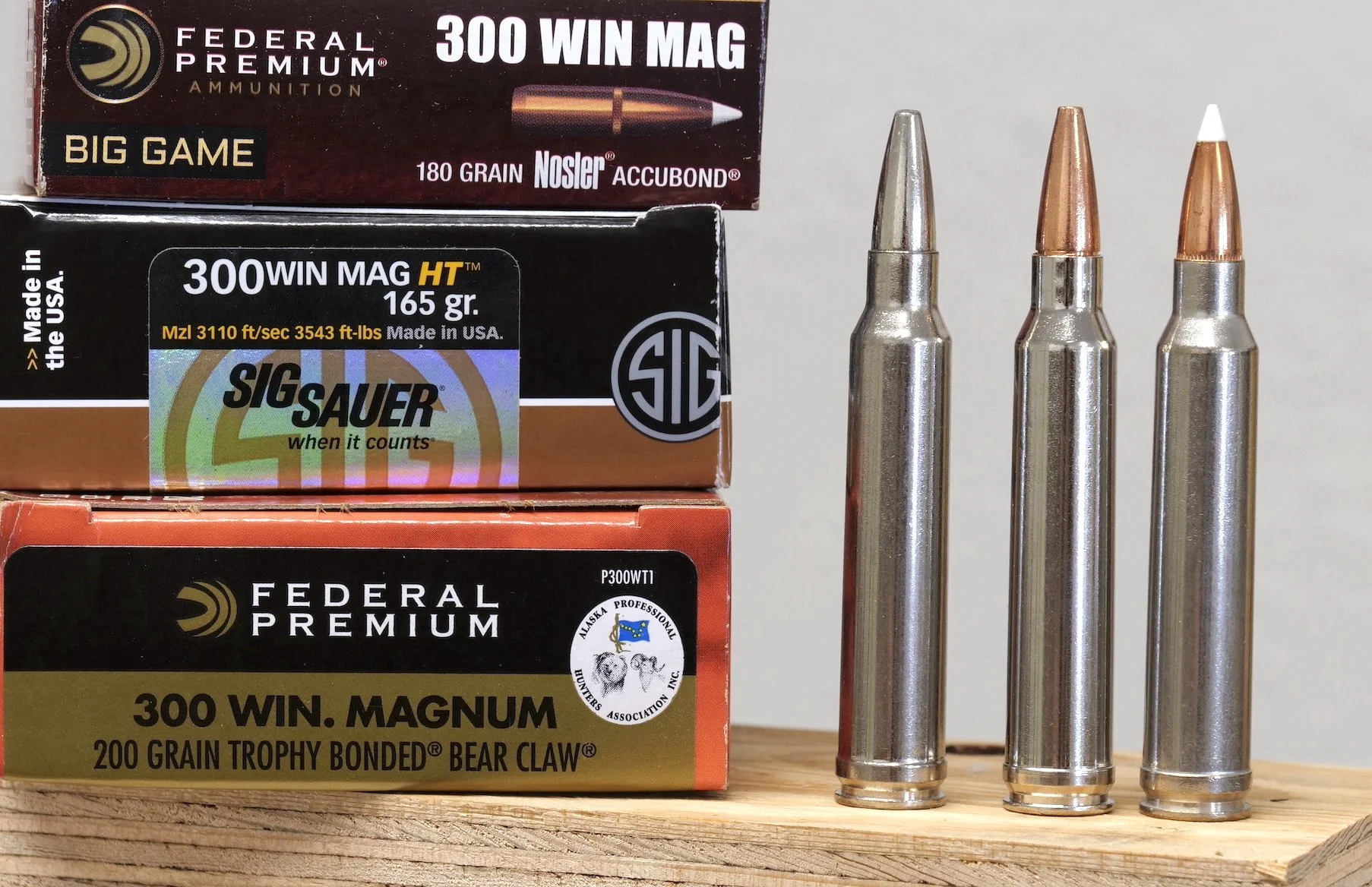
))/2296566.json)


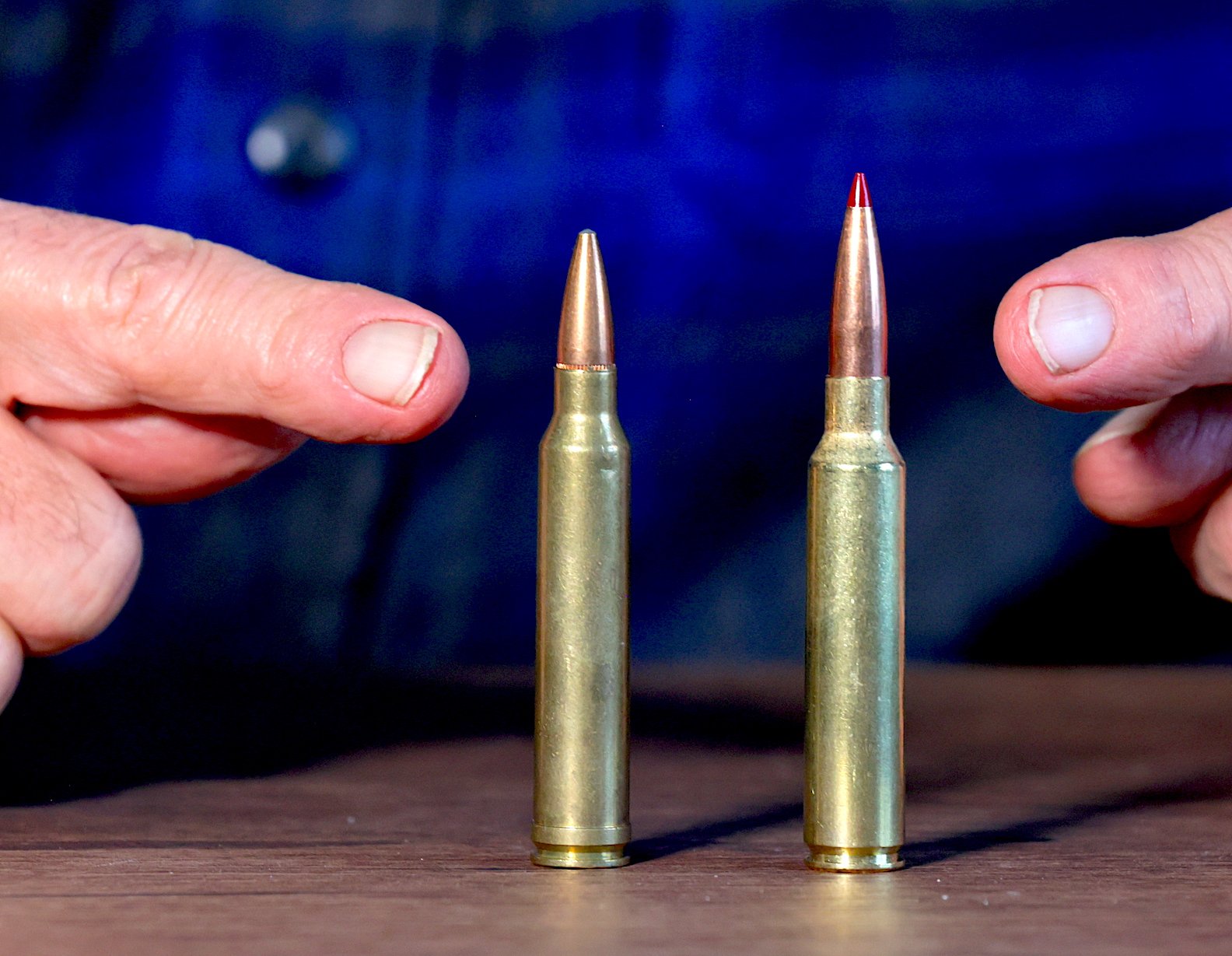

))/2702828.json)







